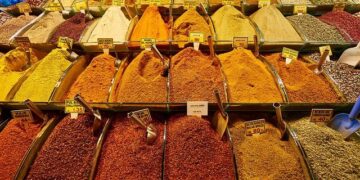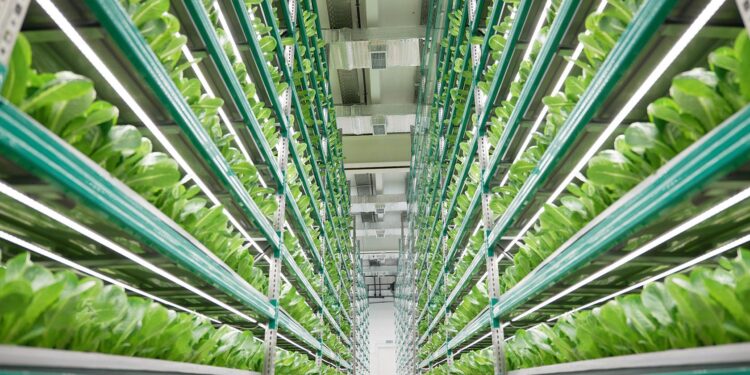In an era where sustainable agriculture and food security are more critical than ever, vertical farming has emerged as a promising solution to meet rising demands while minimizing environmental impact. Taylor Robinson, a leading expert in agricultural data and biosecurity, sheds light on the cutting-edge science driving healthier vertical farms. In an exclusive interview with iGrow News, Robinson delves into how advanced data analytics and biosecurity measures are revolutionizing crop production, ensuring both efficiency and safety in these innovative urban farming systems.
Taylor Robinson Explores the Critical Role of Data Analytics in Optimizing Vertical Farm Yields
Harnessing the power of data analytics has become indispensable for maximizing efficiency and boosting yields in vertical farming operations. Taylor Robinson emphasizes the transformative impact of real-time data monitoring systems that track everything from nutrient levels to microclimate conditions. By integrating advanced sensors and IoT devices, vertical farms can precisely adjust environmental parameters, ensuring optimal growth conditions tailored to each crop variety. This data-driven approach leads to:
- Enhanced resource utilization, minimizing waste of water and nutrients.
- Early anomaly detection, preventing pest infestations and disease outbreaks.
- Improved crop uniformity and consistency in harvest quality.
Robinson also highlights how combining predictive analytics with biosecurity protocols creates a robust framework for healthier crop production. By analyzing historical data patterns alongside live inputs, vertical farm managers can forecast potential risks and implement preventative measures proactively. The following table summarizes the key metrics monitored through data analytics and their corresponding benefits:
| Metric | Purpose | Benefit |
|---|---|---|
| Humidity Levels | Control fungal growth | Reduced pathogen spread |
| Light Intensity | Optimize photosynthesis | Higher biomass yield |
| pH and EC | Adjust nutrient availability | Improved plant health |
Innovations in Biosecurity Measures Ensure Disease-Free Environments for Sustainable Urban Agriculture
Recent advancements in biosecurity have revolutionized how vertical farms maintain pristine, disease-free conditions to guarantee consistent crop yields. Leveraging state-of-the-art sensor networks and AI-driven monitoring systems, these environments can detect early signs of contamination, enabling swift responses that prevent outbreaks before they spread. Taylor Robinson emphasizes that integrating data analytics with traditional biosecurity protocols enhances the predictability and resilience of urban agricultural ecosystems, minimizing the need for chemical interventions and fostering healthier produce.
Key innovations shaping the future of biosecure urban farming include:
- Real-time pathogen detection: Using biosensors that continuously scan for microbial presence.
- Controlled airflow systems: Maintaining strictly regulated air exchange to block external contaminants.
- Automated sanitation: Robotic UV and mist disinfection methods reduce human error and labor.
- Data-driven quarantine protocols: AI models predict and isolate potential infection zones efficiently.
| Innovation | Primary Benefit | Impact on Yield |
|---|---|---|
| AI Pathogen Analytics | Early Contamination Alerts | +15% |
| Robotic UV Sanitation | Consistent Sterilization | +10% |
| Airflow Control Systems | Reduced Cross-Contamination | +12% |
Expert Recommendations for Integrating Science-Driven Practices to Enhance Crop Health in Vertical Farming
Taylor Robinson emphasizes that the future of vertical farming hinges on a rigorous, data-centric approach combined with robust biosecurity measures. Leveraging real-time sensor data allows growers to monitor microclimates, nutrient levels, and plant health indicators with unprecedented precision. According to Robinson, this scientific oversight enables proactive adjustments to environmental controls, reducing stress on crops and increasing resilience against diseases. He advocates for the integration of AI-powered analytics that forecast potential issues before they manifest, ensuring crop cycles remain uninterrupted and yield quality is consistently improved.
Biosecurity remains a critical pillar in Robinson’s blueprint for healthier vertical farms. Implementing strict hygiene protocols and managing human traffic can dramatically limit pathogen introduction. He outlines a few essential strategies for growers:
- Regular sanitation of tools and surfaces to prevent cross-contamination;
- Use of UV-C light sterilization systems to reduce microbial loads in growth chambers;
- Controlled access zones to minimize unwanted biological vectors;
- Continuous monitoring of air and water quality through integrated biosensors.
Adopting these measures within a science-driven framework not only safeguards crop health but also supports sustainable practices that maximize resource efficiency.
Closing Remarks
As the challenges of global food security and sustainable agriculture intensify, voices like Taylor Robinson’s illuminate the path forward. By harnessing data-driven insights and advancing biosecurity measures, Robinson is helping to reshape the future of vertical farming-offering promising solutions for healthier, more resilient crops. As iGrow News continues to track innovations in this space, it’s clear that the intersection of science and technology will play a pivotal role in feeding the world’s growing population while safeguarding environmental health.































